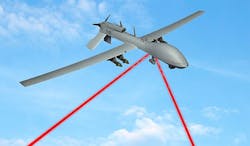Space-based interceptors and drones with laser weapons: Missile Defense Review wish list revealed
WASHINGTON – The long-delayed Missile Defense Review will call for research and investments to ensure America’s security for the next several decades: laser technology, the F-35 as an ICBM killer, and potentially putting interceptors in space. Defense News reports. Continue reading original article
The Military & Aerospace Electronics take:
17 Jan. 2019 -- The idea of using laser weapons to take out a missile in the boost phase is not new, but it has received a boost in the past year in comments from Pentagon technological leaders.
Expect some form of disaggregated space-based sensors architecture, relying on many smaller systems rather than the expensive, highly-capable systems that the U.S. has traditionally relied upon. Hosting sensor payloads on commercial satellites could also be in play.
The Pentagon will launch a study, lasting perhaps six months, to look into the most promising technologies for space-based interceptors, and come up with estimates for cost and time; after the study is done, the military leaders will look to move forward if it makes sense.
Related: Electro-optical sensors key to missile defense
John Keller, chief editor
Military & Aerospace Electronics
Ready to make a purchase? Search the Military & Aerospace Electronics Buyer's Guide for companies, new products, press releases, and videos

